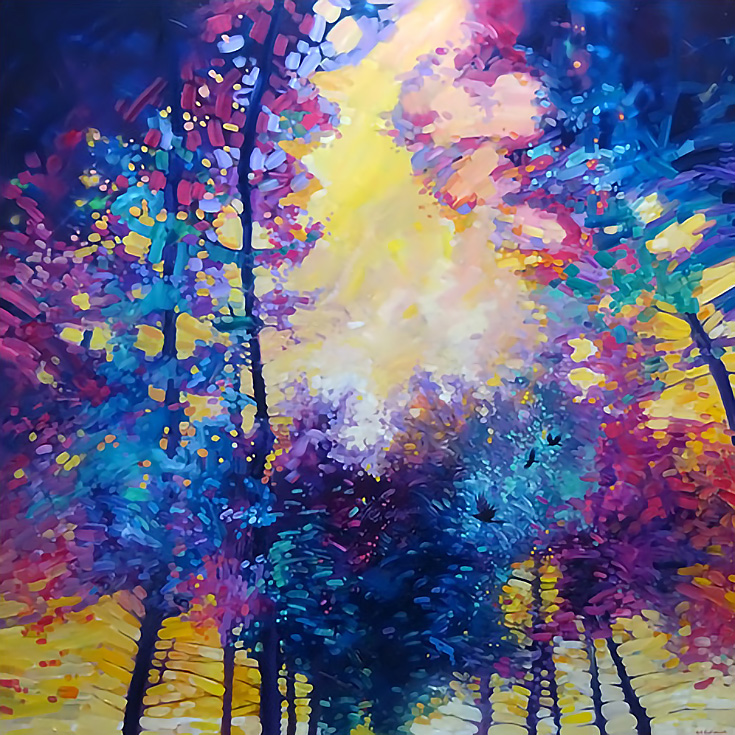As an art tutor (and artist) I know that self-doubt and confidence is one of the biggest things for artists to overcome. These doubts in the main come from feeling you have not met a standard that a) you’ve set for yourself or b) seen set by someone else.
So today I want to share how I deal with these issues. I hope they’ll help you, too—either as an artist or simply as a human being:
Issue 1 – Not meeting your own standards
When you embark on a painting, or any other activity for that matter, you usually have seen something you admire and wish to emulate it. If you love Leonardo Da Vinci paintings and try to paint a “Madonna of the Rocks” in Leonardo style you will possibly be quite disappointed on your first attempt.
I see this often in the artwork of students. They have seen a piece of art they really admire by another artist and they set an image in their mind as the “ideal” of how they want their creation to look. But unless they are an extremely accomplished artist they will NOT be able to reproduce the ideal they have.
The irony is that what they have created is often something quite beautiful but they dismiss it as “not very good” because it does not match this standard stuck in their mind.
The whole point of art is for every artist on the planet to develop their own unique way of communicating what they want to say. You can learn lovely techniques and tips from other artists but it is disastrous to try and be someone else!
THE TAKEAWAY: Observe other people’s art, learn new techniques, and add to your skills regularly but go your own way with them and bask in your uniqueness instead of trying to override it with someone else’s.
Issue 2 – Dealing with other people’s opinions
Sometimes doubts are placed in an artist’s mind by people who are “trying to help.” These comments can either originate from a genuine desire to help—as in the case of a tutor or fellow artist—or from other more insidious motives.
Artists often find themselves targets of people who put them down with carefully worded barbed comments or “advice” that leads nowhere, or other thinly veiled criticisms that will discourage the artist in their efforts.
In my experience, other people’s opinions should be listened to guardedly. But how can you judge who to listen to and who to ignore?
Easy. Simply ask yourself—once you have been in somebody’s company for while—do you feel happier? Or sadder?
I believe people fall into two categories. Those who make you feel happier and better about yourself and your life once you have spent time with them, and those who make you feel sadder, less confident, or more depressed once you have spent time with them.
If you find that someone consistently leaves you feeling worse about yourself when you have been with them a while. . . avoid them. And if you can’t avoid them because you married one of them or are forced to work with them, at least put a shield up that dismisses what they say!
THE TAKEAWAY: Don’t spend time with people whose proximity does not make you feel better about yourself AND feel free to completely ignore the “advice” of such people.
Issue 3 – Getting past art that goes wrong
This happens to me quite regularly. In fact, one out of five of all my paintings turn out like a dog’s breakfast. There are about 15 of them in my loft right now. A good example of this is in the painting below, called The Night Ushers.
Believe it or not, this painting started life as a dark forest scene with a series of deer seen through dark blue and green trees. After a week I realised it was not looking good and went to eat cake.
Then I turned it upside down and decided I liked it better that way, painted over the deer and then painted one big deer in what was originally tree tops. That didn’t work either so I blended all the paint together into a blur and went off to sulk.
A few days later I painted a white horse into it. That was awful so I left it another week.
Finally having turned it upside down again, I put a layer of linseed oil over the whole thing and painted in three ravens. These then became the central part of the painting and the trees and sky radiated out from them.
I worked wet into wet style over some days until finally I realised I really liked it at last! It gave me hell but these are often the best paintings in the end. (The phrase “you can’t make an omelette without breaking eggs” comes to mind. . . )
FINAL TAKEAWAY: If a painting goes wrong, stop looking at it for a few days or weeks and then come back and look at it upside down, in a mirror, without your glasses on, from the bottom of the garden or any other way you can think of to view it differently.
In the end, sometimes you will see a way to completely salvage a painting that just isn’t working. Sometimes you won’t. Treat is as part of the game and don’t beat yourself up about it!
For more from Gill, please visit her website at GillBustamante.com.
This post may contain affiliate links.

